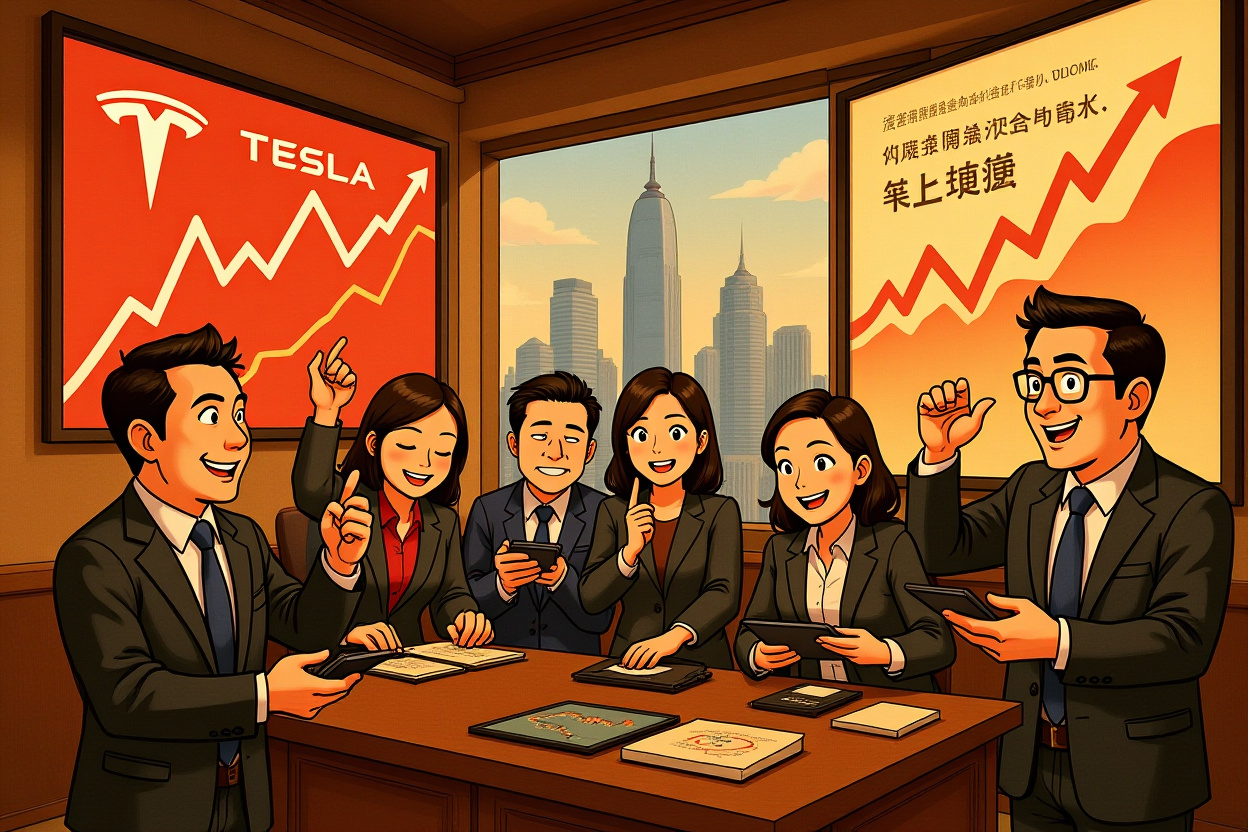Executive Summary
Elon Musk’s significant Tesla stock acquisition signals confidence amid challenging market conditions. Key developments include:
- Tesla CEO purchased 2.57 million shares worth approximately $1 billion on September 12
- Chinese market showing recovery signs with Model Y wait times extending to November 2025
- European markets presenting mixed results with severe declines in major markets offset by gains in Norway and Spain
- Recent price cuts in China expected to boost competitiveness against domestic EV manufacturers
- Production increases at German factory indicating potential European market stabilization
Musk’s Billion-Dollar Bet on Tesla Future
Elon Musk’s substantial stock purchase represents one of the largest insider acquisitions in Tesla’s history. The transaction, executed between $372.37 and $396.54 per share, demonstrates the CEO’s commitment to the company’s long-term vision despite recent market challenges.
Market Reaction and Investor Sentiment
Following the disclosure, Tesla shares surged nearly 6% in pre-market trading, building on the previous session’s 7.3% gain. This aggressive buying activity signals strong insider confidence that typically influences institutional investor behavior and market sentiment.
The timing of Elon Musk’s $1 billion Tesla stock purchase coincides with critical developments in both Chinese and European markets, making this move particularly significant for global investors monitoring Tesla’s international performance.
Chinese Market Dynamics: Recovery Signals Emerge
Tesla’s positioning in the world’s largest electric vehicle market shows signs of stabilization after a challenging first half. The extended wait times for Model Y deliveries indicate recovering demand despite earlier setbacks.
Sales Performance and Market Share Analysis
First-half 2025 sales in China reached 263,400 vehicles, representing a 5.4% year-over-year decline. This performance lagged behind the overall new energy vehicle market, which grew 40.3% to 6.937 million units during the same period, according to China Association of Automobile Manufacturers (中国汽车工业协会) data.
August brought encouraging signs with wholesale shipments of 83,192 vehicles, though down 4% year-over-year, showing a robust 22.6% month-over-month improvement. This suggests the impact of Elon Musk’s $1 billion Tesla stock purchase aligns with improving fundamental metrics in critical markets.
Strategic Price Adjustments in Competitive Landscape
Tesla’s recent pricing strategy in China reflects the intense competition in the world’s largest EV market. The company reduced prices for the Long Range Rear-Wheel Drive Model 3 just weeks after its introduction, signaling aggressive positioning against domestic competitors.
Competitive Response and Market Positioning
The price cut from 269,500 yuan to 259,500 yuan for the 830-kilometer range model demonstrates Tesla’s willingness to sacrifice margins for market share. This strategic move comes as Chinese manufacturers like BYD (比亚迪) and NIO (蔚来) continue to expand their product offerings and technological capabilities.
Industry analysts from Guoyuan Securities (国元证券) note that Tesla’s limited model variety and aging product lineup present ongoing challenges in maintaining competitive advantage against rapidly innovating Chinese manufacturers.
European Market Divergence: From Crisis to Cautious Optimism
European performance reveals a tale of two realities with dramatic declines in major markets contrasting with growth in smaller territories. Germany’s Federal Motor Transport Authority (Kraftfahrt-Bundesamt) data shows concerning trends that affected investor sentiment before Elon Musk’s $1 billion Tesla stock purchase.
Market-Specific Challenges and Opportunities
August registration data revealed severe declines across key European markets: Germany (-39%), France (-47.3%), Sweden (-84%), Denmark (-42%), and Netherlands (-50%). These numbers reflect both market saturation and increased competition from European and Chinese manufacturers.
Conversely, Norway showed 21.3% growth while Spain experienced a remarkable 161% increase from 549 to 1,435 units. Even in these growing markets, Tesla’s expansion pace trails behind BYD’s performance, indicating intensified competition across all segments.
Production Adjustments and Manufacturing Strategy
Recent comments from Tesla’s German factory负责人 (responsible person) Andre Thierig indicate production increases despite market challenges. The upward revision of second-half production targets suggests underlying strength not immediately apparent in sales figures.
Capacity Utilization and Efficiency Improvements
The German factory’s production increase reflects both improved operational efficiency and anticipation of demand recovery. This development following Elon Musk’s $1 billion Tesla stock purchase suggests internal metrics may be more positive than public sales data indicates.
Manufacturing optimization remains critical as Tesla faces pressure from traditional automakers accelerating their EV transitions while managing complex supply chain dynamics and regulatory requirements across multiple jurisdictions.
Investment Implications and Market Outlook
The convergence of insider buying, market-specific recoveries, and strategic positioning creates a complex investment thesis for Tesla stakeholders. Elon Musk’s $1 billion Tesla stock purchase serves as a strong confidence indicator despite mixed fundamental data.
Strategic Considerations for Institutional Investors
Several factors warrant attention for portfolio managers considering Tesla exposure: the company’s ability to maintain technological leadership, navigate regulatory environments, and execute product refresh cycles while managing margin pressure from competitive pricing.
The Chinese market recovery signs coupled with European production increases suggest potential inflection points that could validate the timing of Elon Musk’s $1 billion Tesla stock purchase. However, investors should monitor monthly delivery data and competitive dynamics closely.
Forward-Looking Analysis and Risk Assessment
Tesla’s trajectory depends on multiple variables including product innovation cycles, regulatory developments, and macroeconomic conditions affecting consumer demand for premium electric vehicles across global markets.
Key Monitoring Metrics for 2025-2026
Investors should track: monthly delivery numbers in China and Europe, margin trends amid price competition, new model introductions, and regulatory developments affecting EV adoption rates. The company’s ability to launch new models will be particularly critical given product lifecycle concerns raised by analysts.
While Elon Musk’s $1 billion Tesla stock purchase provides short-term momentum, sustained performance requires execution across manufacturing, innovation, and market expansion dimensions simultaneously.
Synthesis and Strategic Guidance
Elon Musk’s substantial investment coincides with inflection points in Tesla’s key markets. The Chinese recovery signs, though early, combined with European production increases and strategic pricing adjustments, create a compelling narrative for potential recovery.
Investors should view current developments as part of a larger transformation in the global automotive industry. Tesla’s position as both technology innovator and volume manufacturer creates unique challenges and opportunities that require nuanced analysis beyond quarterly earnings metrics.
For sophisticated market participants, the current environment presents opportunities to establish or increase positions ahead of potential catalysts including new product announcements, manufacturing efficiency improvements, and market share stabilization in critical regions. Regular monitoring of delivery data and competitive dynamics remains essential for risk management.




